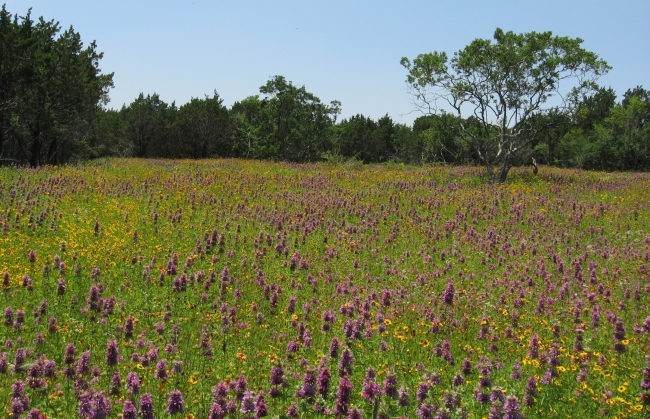Prairie Restoration
In keeping with the park’s master plan, the City of San Antonio’s Parks and Recreation Department is restoring grasslands in the park.
While the 311-acre property features many native trees, there are virtually no native grasses — less than 1 percent, according to a plant survey conducted as part of the master plan.
The property had been overgrazed by livestock during its more than 100 years as a working dairy farm, and non-native species such as Ranch Bluestem Grass and Bermuda Grass have dominated ever since.
As former Mayor Phil Hardberger said during the park’s May 15 grand opening ceremonies, the plan is to create oak savannahs, which are clearings among the oak trees where understory and groundcover of native plants, grasses and wildflowers can re-establish themselves, allowing visitors of the park to experience what the land was like more than a century ago. Native grasslands also support wildlife, so the restoration is a critical element to rebuilding natural ecosystems.
The City has established three acres of test plots, which they will study to learn the most efficient restoration methods for elsewhere in the park (as well as other properties throughout the city). City staff spread wildflower seeds in September and October of last year, and these photos are result of their effort.
For those of you interested in the science behind the restoration, Leonard provides further explanation:
“Half of the plots were sprayed with inoculating microbes (good bacteria and fungi) on May 7th. The inoculants came from soil in native grasslands in the Hill Country and was mixed with organic fertilizers and organic compost. The idea is to see how the grasses and wildflowers respond to these inoculants and fertilizers and whether future grassland restoration projects would benefit from this type of application.
Soil samples from the plots were taken in February and sent off for analysis. The amount of nutrients as well as bacteria and fungi were tested. The will give us a good baseline to compare with future soil samples. A second round of soil sampling will be conducted in the fall to see if the sprayed inoculants increased the amount of nutrients, bacteria, and fungi in the soil.
Additionally, Dr. Kelly Lyons with Trinity University brought her class out to the grassland plots April 28th to get baseline data for the plants before the inoculants were sprayed. This survey will be completed again in the fall to see if the inoculants sprayed made any difference in plant growth and response. We hope to have enough data by then to possibly present at the Texas Society for Ecological Restoration conference in the fall.”

